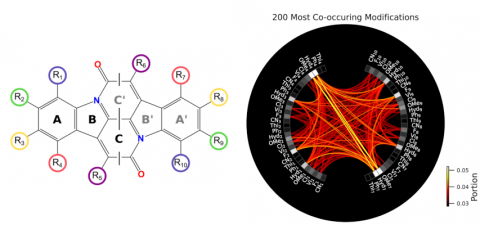Electronic structure informatics to search for hightly efficient photovoltaic materials using singlet fission

The transition from fossil fuels to environment-friendly and renewable sources of energy has become one of the central challenges for today’s society and across scientific disciplines. Though global energy studies report that there has been record-breaking growth in sustainable energy production, further improvements are desirable. Solar energy is a promising solution for the near future, owing to its availability and potentially high output.
In this study, an "electronic structure informatics" approach combining the semiempirical molecular orbital method, time-dependent density functional theory, and machine learning has been applied to rapidly search for materials that can be used as photovoltaic cell materials with high efficiency by multiple exciton generation using singlet fission from over 4 million derivatives based on indigo, a famous dye of natural origin. The obtained promising candidate molecules and their possible candidates were identified and compared with those not. Random forest classification of the chemical structures of the obtained promising and non-promising candidate molecules led to the discovery of chemical structure rules that effectively show singlet fission and the identification of candidate materials with symmetric chemical structures and sufficient synthesizability in the order of several hundred.